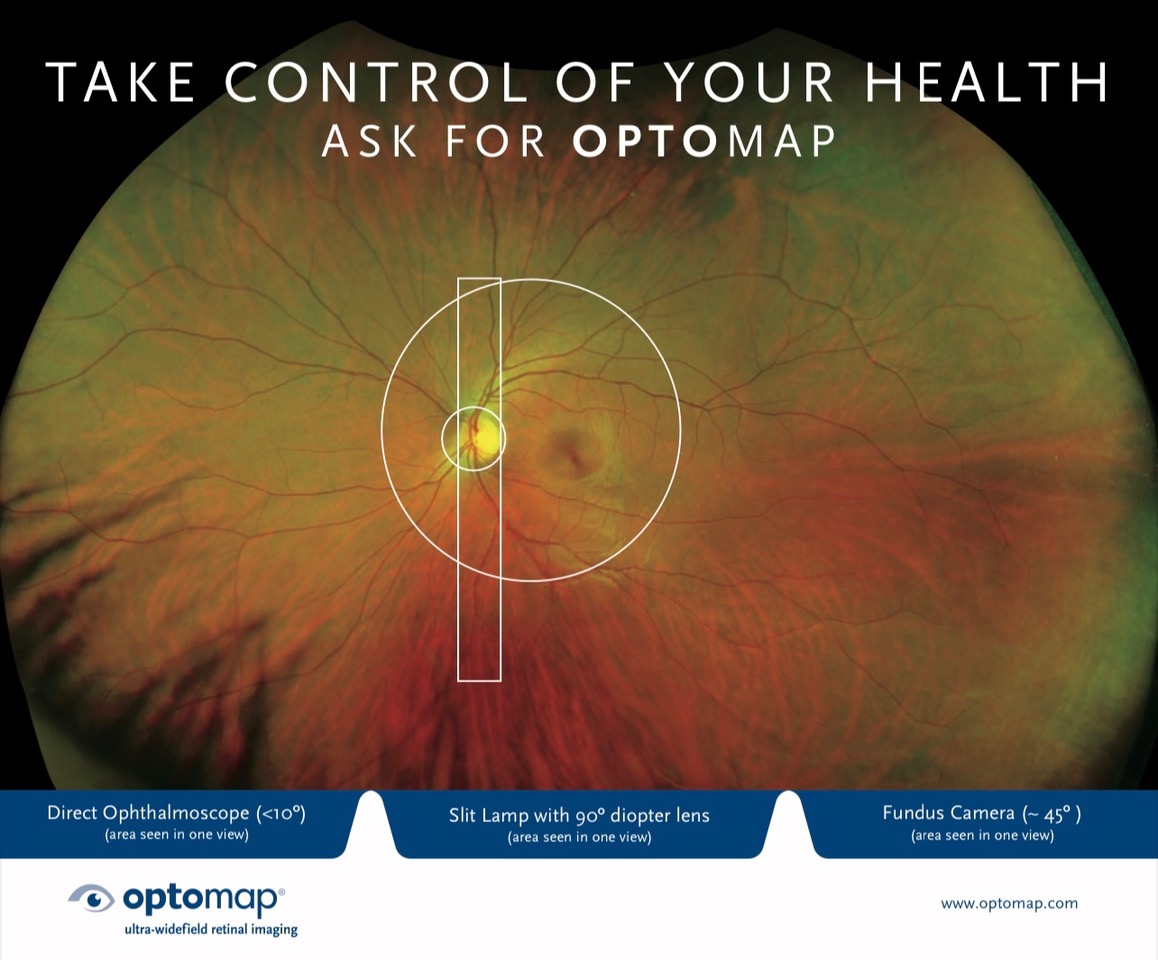
Those people who have had an eye examination very recently with Davina or Fiona at Richard Petrie Optometrists may have been examined on their new piece of equipment, the Optomap. This, in relation to the OCT, which I introduced ten years ago, is as a wide angle camera is to a microscope. The OCT looks in incredible detail, and at depth, at a central area of the retina while the Optomap looks at almost the whole of the retinal surface in one fantastic image. Between the two they represent the biggest step forward in ocular imaging since the invention of the ophthalmoscope in about 1850.
The NHS ophthalmic service has gone from crisis to crisis ever since its formation as a supplementary part of the new National Health Service in 1948. Originally everyone was entitled not only to a free sight test, as defined in 1948, but also a free pair of glasses if they needed them. Not surprisingly, you might think, there was a huge demand for this new free entitlement. It did come as a surprise, however, to the NHS planners. They had made no contingency plans to support the existing infrastructure of firms making spectacles who simply couldn’t cope with the demand.
By 1951 delivery times for new spectacles were approaching eighteen months (you could find that your spectacle prescription had changed before the glasses were even ready) and the then Labour government had to swallow its egalitarian principles and institute charges for the supply of glasses to reduce demand. Even though the NHS test remained free there has always been the option for a patient who didn’t want to have an NHS sight test to have a private eye examination.
Although the definition of a sight test remains very much the same as it was in 1948 there has been the expectation that more modern methods of conducting that test would be used as they came along. However the payment for the test remained based on the original fee and was very rarely increased by anything like the rate of inflation. In fact in the late seventies the government was taken to court and lost for failing to pay enough to cover the increased overheads that all opticians were facing. This reluctance to pay an adequate sight test fee, of course, led to an over reliance on selling frames and lenses privately to make up for the shortfall of NHS fees.
Advances like OCT and Optomap do not come cheaply and as the NHS fee nowhere near covers the use of modern technology we introduced a subscription service, RP4, in 2003 so that our patients could break down the cost of using the latest hi-tech equipment in their routine eye examinations and at the same time save a little bit on the cost of their spectacles. We were trying to level up the imbalance between spectacle prices and eye exam fees and now Davina is planning to take that a step or two further – watch this space.

